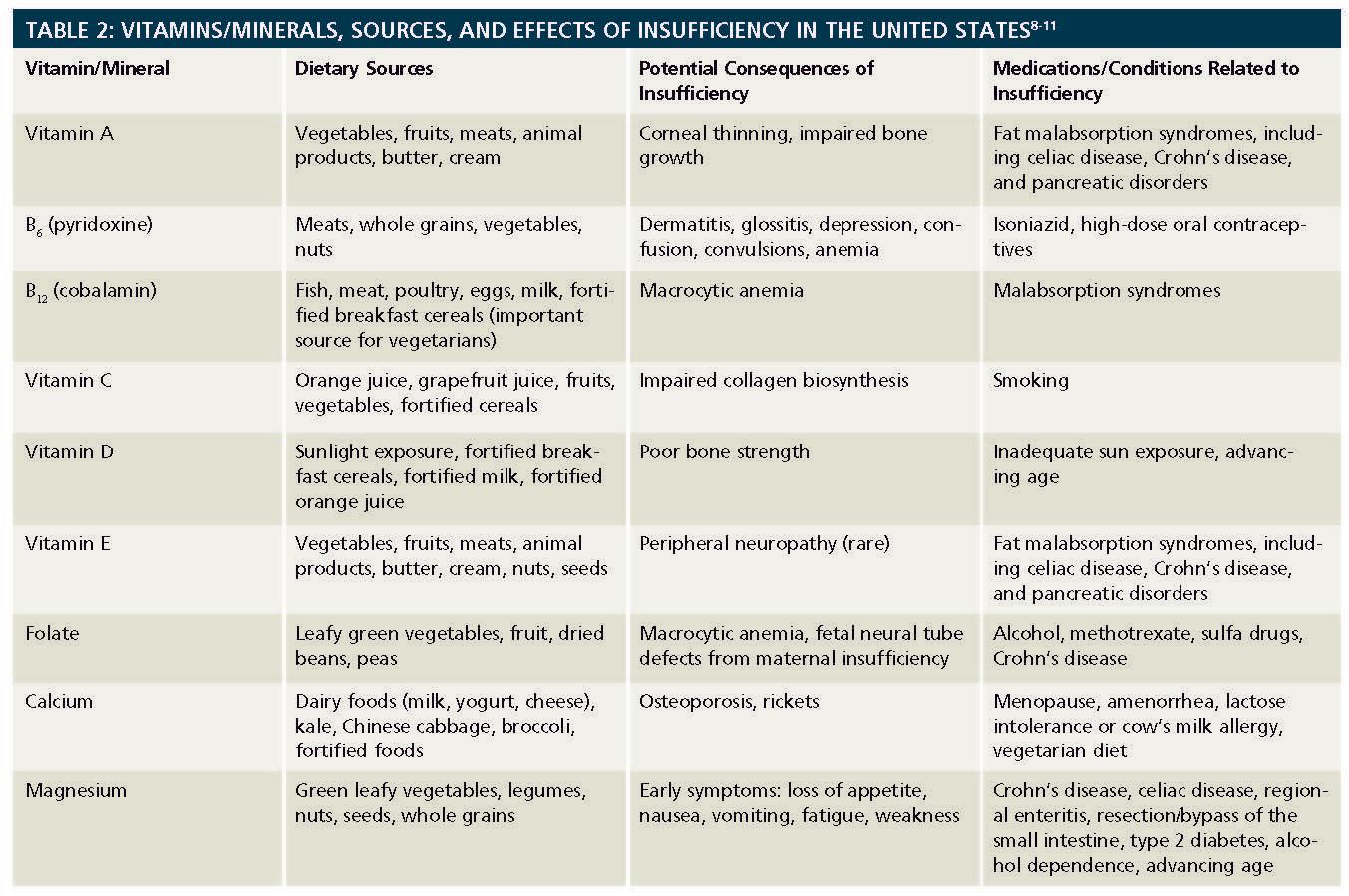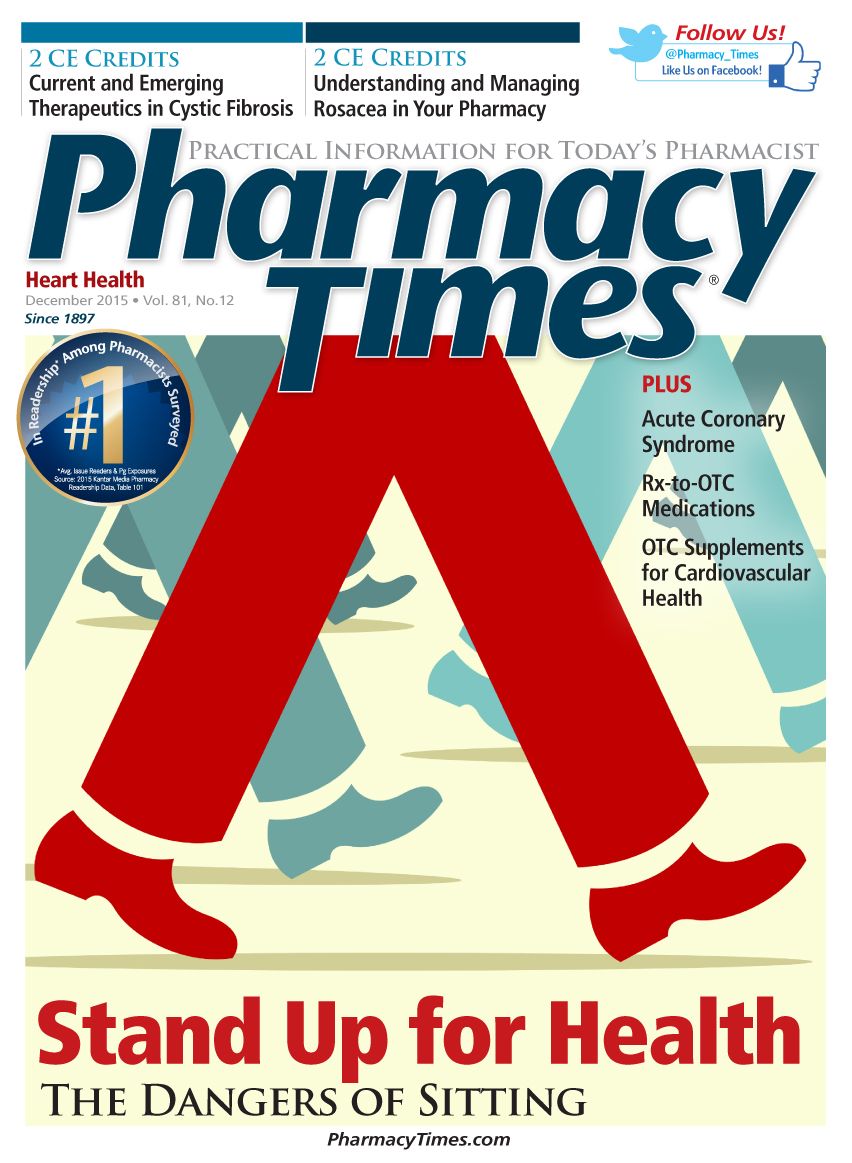Publication
Article
Pharmacy Times
Closing the Vitamin and Mineral Intake Gap: How Pharmacists Can Help
This article was sponsored by the Campaign for Essential Nutrients.
As readily accessible health care providers who are stewards of appropriate medication therapies and general health advisors, pharmacists play important roles in advising patients regarding good nutritional habits, which may include the use of supplements. According to the 2015 Pharmacy Times Survey of Pharmacists’ OTC Recommendations, pharmacists provide patients with recommendations regarding multivitamins an estimated 1.4 million times per month.1 These interactions provide many opportunities for pharmacists to advise patients and help them meet their nutritional needs.
The purpose of this article is to raise awareness of unmet needs regarding nutrient intake (specifically, micronutrient intake) and describe how pharmacists can help address these needs.
About Micronutrients
A complete diet includes macronutrients (carbohydrates, lipids, and proteins), as well as more than 29 essential micronutrients (vitamins and minerals). These micronutrients, which are required to maintain the body’s metabolic and developmental processes, either cannot be produced by the body or cannot be produced in sufficient quantities to meet the body’s needs.2,3 As a result, micronutrients must be obtained from external sources, such as food or supplements, to maintain good health.3
Micronutrient Insufficiencies Are Common
Inadequate micronutrient intake is common in the United States. In a nationwide study, Wallace et al analyzed dietary patterns in more than 16,000 individuals 4 years and older using data collected by the National Center for Health Statistics of the Centers for Disease Control and Prevention through the annual National Health and Nutrition Examination Survey (NHANES) from 2007 through 2010.4
Based on dietary interviews and 24-hour dietary recalls, investigators determined the individuals’ intakes of various vitamins and minerals and the percentage who obtained the estimated average requirements (EARs) from foods (Table 1).4,5 Importantly, because EAR intake levels meet the nutritional requirements of 50% of patients in a given age and gender group, use of EARs provides a conservative estimate of the adequacy of dietary intake.6
Results indicate that the majority (94%) of Americans have diets inadequate in vitamin D and nearly 9 in 10 (89%) fall below recommended levels of vitamin E intake. Magnesium, calcium, vitamin C, and vitamin A intake levels each fell short in more than one-third of individuals, with 52%, 44%, 39%, and 43% of individuals, respectively, insufficient in each of these 4 micronutrients.4
Supplements can help address the vitamin and mineral gap. Regular use of multivitamin/mineral supplements has been shown to substantially reduce the likelihood of insufficient micronutrient intake.4 The Wallace et al study previously described showed that dietary supplement use reduced the percentage of Americans with inadequate EAR intake of vitamins D, E, A, and C, as well as calcium and magnesium, by 21%, 24%, 19%, 20%, 10%, and 11%, respectively.4 Insufficiencies of key vitamins and minerals may lead to a variety of rare but serious adverse health consequences in the United States (Table 2).7-11

Populations at Higher Risk of Micronutrient Insufficiencies
Although the general population is at risk for inadequate intake of several key vitamins and minerals, patients with certain conditions are at an especially high risk, including patients undergoing regular hemodialysis, patients with malabsorption syndromes, and individuals with inadequate sunlight exposure.7 Chronic alcohol use, smoking, and long-term use of medications such as methotrexate, antiepileptic drugs, and isoniazid may also cause or exacerbate vitamin insufficiencies.8
In addition, individuals in specific life stages and those adopting certain diets may be at risk for nutrient insufficiencies. According to the United States Preventive Services Task Force (USPSTF), despite broad-scale folate fortification of enriched grain products, most women are not receiving sufficient folate from food alone. The USPSTF recommends that all women of childbearing age take a multivitamin containing 800 mcg of folate to help reduce the risk of neural tube defects.9 Multivitamin supplementation is also important for patients adopting calorie- restricted diets or diets that exclude certain foods or food groups.12
Role of the Pharmacist
Approximately 90% of Americans receive inadequate dietary levels of one or more key vitamins and minerals—specifically D, E, A, C, calcium, and magnesium—and pharmacists have important roles in helping close this nutrition gap.4 Pharmacists can educate patients in the general population regarding the importance of vitamin and mineral supplements, which have been demonstrated to help provide nutritional support in addition to a healthy diet.4
Pharmacists can also screen patients for particular characteristics that may place them at higher risk for insufficient micronutrient intake, including age/life stage, comorbidities, and medications. However, treatment of deficiencies and associated conditions are beyond the scope of a daily multivitamin and must take place under the supervision of a physician.
By evaluating patients’ characteristics and nutritional needs, pharmacists can make appropriate recommendations regarding single- and multivitamin and mineral supplements to help patients close the vitamin and mineral gap.
The Campaign for Essential Nutrients is committed to educating Americans about the essential role vitamin and mineral supplements can play in helping to fill their daily nutritional gaps. The Campaign for Essential Nutrients is sponsored (funded) by Bayer HealthCare LLC, DSM Nutritional Products, Pfizer Inc, and Pharmavite, LLC. The organizations came together as part of their shared commitment to provide consumers with simple ways to supplement their diets and get key daily nutrients.
References
- 2015 Survey of Pharmacists’ OTC Recommendations. OTC Guide, Pharmacy Times. June 2015.
- Institute of Medicine. Dietary Reference Intakes: The Essential Guide to Nutrient Requirements. Washington, DC: The National Academies Press; 2006.
- Underwood BA. Perspectives from micronutrient malnutrition elimination/eradication programmes. Bull World Health Organ. 1998;76(suppl 2):34-37.
- Wallace TC, McBurney M, Fulgoni VL 3rd. Multivitamin/mineral supplement contribution to micronutrient intakes in the United States, 2007-2010. J Am Coll Nutr. 2014;33(2):94-102. doi:10.1080/07315724.2013.846806.
- United States Department of Agriculture. Dietary reference intakes (DRIs): estimated average requirements. www.nal.usda.gov/fnic/DRI/DRI_Tables/recommended_intakes_individuals.pdf. Accessed October 2015.
- US Department of Agriculture and US Department of Health and Human Services. Dietary Guidelines for Americans, 2010. 7th ed. Washington, DC: US Government Printing Office; 2010.
- Ward E. Addressing nutritional gaps with multivitamin and mineral supplements. Nutr J. 2014;13:72. doi: 10.1186/1475-2891-13-72.
- Second National Report on Biochemical Indicators of Diet and Nutrition in the U.S. Population. Atlanta, GA: Centers for Disease Control and Prevention; 2012.
- US Preventive Services Task Force. Folic acid for the prevention of neural tube defects: U.S. Preventive Services Task Force recommendation statement. Ann Intern Med. 2009;150(9):626-631.
- Calcium: fact sheet for health professionals. National Institutes of Health website. https://ods.od.nih.gov/pdf/factsheets/Calcium-HealthProfessional.pdf. Accessed October 2015.
- Magnesium: fact sheet for professionals. National Institutes of Health website. https://ods.od.nih.gov/pdf/factsheets/Magnesium-HealthProfessional.pdf. Accessed October 2015.
- Stein K. Severely restricted diets in the absence of medical necessity: the unintended consequences. J Acad Nutr Diet. 2014;114(7):986-994. doi: 10.1016/j.jand.2014.03.008.








